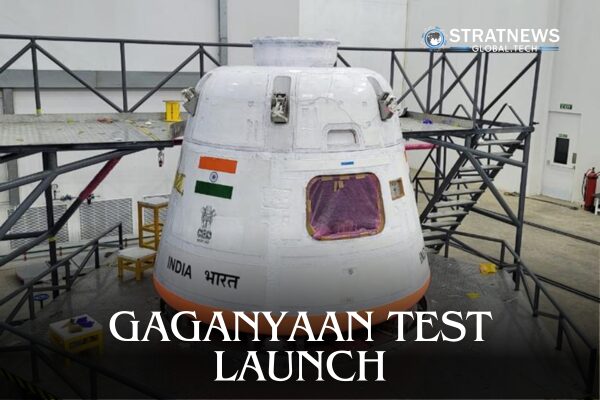India is preparing to take a major step toward sending humans into space, with the Indian Space Research Organisation (ISRO) confirming that the first uncrewed test mission of the Gaganyaan program will lift off in December.
The announcement was made during a press conference in the national capital, chaired by Union Minister Dr Jitendra Singh and attended by ISRO Chairman Dr. V. Narayanan.
Narayanan revealed that the upcoming test flight, dubbed G1, will carry Vyommitra, a half-humanoid robot designed to simulate human physiological responses in space. “The first uncrewed mission, G1, is going to be lifted off by this year’s end, maybe close to December,” he said, adding that it marks a critical milestone in India’s ambitions to independently send astronauts into orbit.
The Gaganyaan program, first announced by Prime Minister Narendra Modi in 2018, aims to send a crewed mission into space by 2025. During the press briefing, Narayanan praised ISRO’s recent achievements, noting that the space agency has made “a lot of accomplishments in the last four months,” including progress on cryogenic engine testing and successful satellite launches.
A Historic Moment for Indian Astronauts
For the first time, the selected Indian astronauts for the mission, Group Captain Shubhanshu Shukla and Group Captain Prashanth B. Nair, made a public appearance and shared their thoughts with the media.
Group Captain Shukla, who recently became the first Indian to travel to the International Space Station as part of Axiom Mission 4, described his experience as transformational. “The knowledge gained just by being there is priceless,” he said, noting that such missions provide insight that ground-based training simply cannot offer. He added that after spending nearly three weeks in microgravity, “the body forgets how to live in gravity.”
With pride and a sense of historic continuity, Shukla echoed the legendary words of Rakesh Sharma, India’s first astronaut, saying: “India still looks ‘saare jahaan se achcha.’”
His crewmate, Group Captain Nair, used a poetic analogy from the Ramayana to describe their partnership and the collective effort behind Gaganyaan. “A few months from now, we are going to have Diwali. That is the time when Ram ji entered Ayodhya. If I can call myself Lakshman here… even though I am older than ‘Shuks,’ I would love to be Lakshman to this Ram any day,” Nair said. He went on to salute the ISRO team as the modern-day vanar sena, saying, “Without them, it would not have been possible.”
Broader Mission Goals and Global Collaboration
ISRO Chief Narayanan also highlighted international collaborations and upcoming launches. He confirmed that the NASA-ISRO Synthetic Aperture Radar (NISAR) satellite, launched on July 30 using India’s GSLV-F16 rocket, is functioning well. The satellite, a joint project between NASA’s Jet Propulsion Laboratory and ISRO, is one of the most expensive Earth observation satellites ever built.
“In two to three months, we are also going to launch a 6,500 kg communication satellite for the US,” Narayanan added, stressing India’s growing role as a trusted launch partner in global space missions. So far, ISRO has launched 433 satellites for 34 countries.
Space Tech and National Security
Speaking on the strategic importance of space technology, Dr. Jitendra Singh pointed to its role in national defence, particularly during Operation Sindoor. He said the operation showcased the effective use of space-based tools in warfare, calling India’s space missions “much more cost-effective compared to their counterparts elsewhere.”
He also highlighted the integration of technologies from space and atomic energy developed over the last decade, underlining how space innovations now support various sectors, from disaster management and education to defence and public health.
With its own astronauts, its own spacecraft, and its own rocket, India is inching closer to becoming the fourth country in the world to independently send humans into space. And if all goes according to plan, when Gaganyaan lifts off in 2025, it will not only be a technological triumph, it will also be a moment of national pride, powered by decades of scientific dedication and the dreams of millions.


